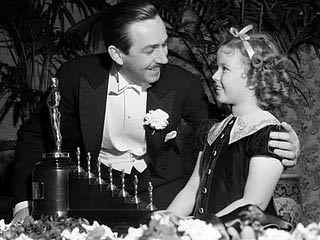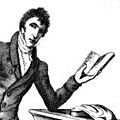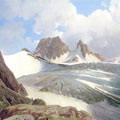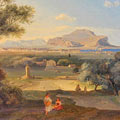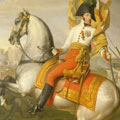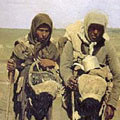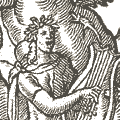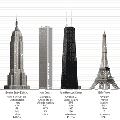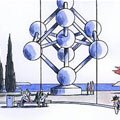de illustraties van Arthur Rackham (1867-1939)
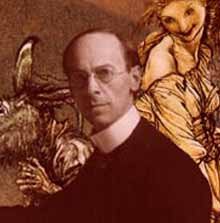 Sneeuwwitje was de eerste grote tekenfilm van Walt Disney en werd met kerst 1937 in de Verenigde Staten uitgebracht na een productietijd van vier jaar. De film vestigde in één klap de celanimatie als zelfstandige kunstvorm. Om zich in te dekken tegen het enorme risico dat hij met deze onderneming liep, koos Disney voor een sprookje waar iedereen vertrouwd mee was en zocht hij aansluiting bij de illustraties van Arthur Rackham (1867-1938) , de Engelse meesterillustrator die de meeste mensen in de jaren dertig kende van zijn illustraties bij de sprookjes van Grimm. Vervolgens huurde hij kunstenaars in als Albert Hurter, Ferdinand Horvath en Gustaf Tenggren die Rackham’s stijl vertaalden naar de tekenfilm. Disney’s figuren werden opgebouwd uit cirkels die effectief te animeren zijn. Met egale dekverf werden alle bewegende elementen op transparante cellen geschilderd. Achtergronden werden steeds in aquarelverf uitgevoerd in de door Disney zo bewonderde stijl van Rackham. Gustaf Tenggren paste Rackham’s stijl enigszins aan omdat deze vaak erg gedetailleerd is voor de achtergrond en daardoor afleidt van de figuren.
Sneeuwwitje was de eerste grote tekenfilm van Walt Disney en werd met kerst 1937 in de Verenigde Staten uitgebracht na een productietijd van vier jaar. De film vestigde in één klap de celanimatie als zelfstandige kunstvorm. Om zich in te dekken tegen het enorme risico dat hij met deze onderneming liep, koos Disney voor een sprookje waar iedereen vertrouwd mee was en zocht hij aansluiting bij de illustraties van Arthur Rackham (1867-1938) , de Engelse meesterillustrator die de meeste mensen in de jaren dertig kende van zijn illustraties bij de sprookjes van Grimm. Vervolgens huurde hij kunstenaars in als Albert Hurter, Ferdinand Horvath en Gustaf Tenggren die Rackham’s stijl vertaalden naar de tekenfilm. Disney’s figuren werden opgebouwd uit cirkels die effectief te animeren zijn. Met egale dekverf werden alle bewegende elementen op transparante cellen geschilderd. Achtergronden werden steeds in aquarelverf uitgevoerd in de door Disney zo bewonderde stijl van Rackham. Gustaf Tenggren paste Rackham’s stijl enigszins aan omdat deze vaak erg gedetailleerd is voor de achtergrond en daardoor afleidt van de figuren.

© disney enterprises, inc image source
In de zogenaamde Golden Age maakte Walt Disney na Sneeuwwitje (1937) nog de tekenfilms Assepoester (1950) en de Schone Slaapster (1959). Het succes van Sneeuwwitje, in 1937 een mirakel in Technicolor , zou niet meer geëvenaard worden. Sneeuwwitje stond in 1998 op een 49e plaats in de AFI’s 100 Years de lijst met honderd beste Amerikaanse films van de twintigste eeuw.
Op het web vond ik nog een serie artikelen getiteld The Art Behind the Disney Princesses waarin Disney‘s inspiratiebronnen voor zijn tekenfilmprinsessen worden onthuld. Voor Snow White, Cinderella en Aurora (The Sleeping Beauty) liet Disney zich inspireren door de illustratoren Arthur Rackham (1867-1939), C.E. Brock (1870-1938), Mary Blair (1911-1978) en Eyvind Earle (1916-2000).
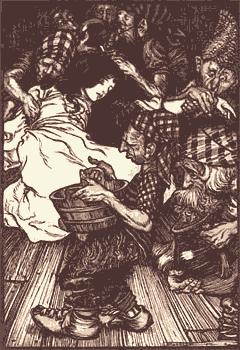
volgens Arthur Rackham
Bron: en.wikipedia.org
snow white and the seven dwarfs [ surlalunefairytales.com ] | official site
